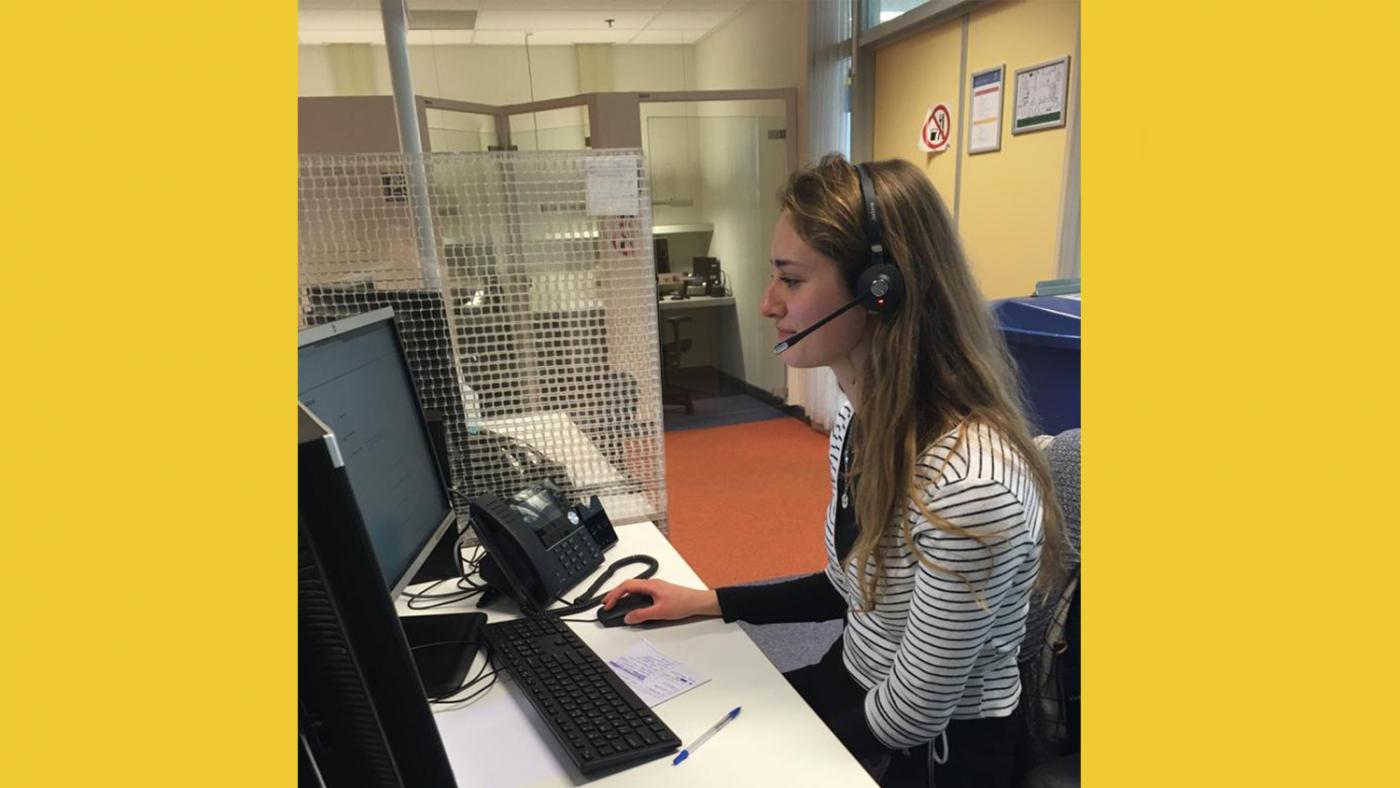Medical students use corona app to give diagnoses

The app is developed by the Onze Lieve Vrouwen Gasthuis hospital (OLVG) in Amsterdam and a company called Luscii, but now this same application is also used by the UMC Utrecht. Dutch newspaper De Telegraaf writes that in Amsterdam the app is a huge success. Newspaper Het Parool writes that currently 52,000 people in Amsterdam are using the OLVG corona app. In Utrecht there are presently 11,000 downloads of the app, of which 9,700 are active users who think they might be infected with the coronavirus.
The free app asks the users to indicate what their temperature is, how short of breath they are, how bad their cough is, and if they are suffering from a cold or a sore throat. Users can give a number from one to ten indicating how badly they are suffering from a cold or shortage of breath. The medical team contacts users within 24 hours if they think there is a reason to do so. If the symptoms are mild, users can expect an e-mail. “The app is very reliable,” says Annette Beetsma, project manager of the app in Utrecht. “In case of any abnormalities people always receive a phone call.”
Whoever reports serious symptoms, will receive a phone call
Floor is a medical student and works in the UMC Utrecht with the corona check app for two days a week. She works in an office in the hospital together with about ten others, all fifth or sixth year medical students. Additionally, there are always two general practitioners present.
The logarithm of the app identifies the most alarming results of the users. Often these are alarming combinations like a cough and a fever. Floor and her colleagues check if the data is truly alarming, and if this is the case they call up the person behind the data. “We call people to get to know more about their symptoms. What are their symptoms exactly and how long have they had them?”
For each case, Floor decides whether the person should be referred to a general practitioner. Floor presents all alarming or questionable cases to her supervisor, who is a general practitioner. In the end, the supervisor will decide whether the person in question should take action. “I noticed that it is reassuring to people that I present their case to a general practitioner,” says Floor.
Except the data that Floor receives from the app, she also pays attention to other alarming signals, like panting on the phone. Other than that it are mostly vulnerable people, like elderly, with symptoms of the coronavirus that are encouraged to contact a general practitioner.
Taking away insecurities
Floor herself thinks the app is very useful. “People like it when someone on the background is keeping an eye on them, and that they can talk about their problems to someone who is listening carefully”, she says. “This can take away many insecurities. And it is nice for the general practitioners that they receive less calls, at least, I hope so.”
Whether the app is also useful for elderly, Floor is not entirely sure about. “If you don’t have anything to download the app on, then you can’t use it, and I think that that is why many elderly don’t have the app. However, if we can take care of the younger people, then general practitioners can spend more time on the elderly.”
Floor started working last Thursday (26 March), back then she did not receive many calls. However, she notices that it is slowly becoming busier. “Yesterday I was calling people for five hours straight.” Still, the shifts are currently being shortened. It is not as busy as expected. “I think we still need some more recognition,” says Floor.
The app stresses that it does not replace regular health care, and that in case of emergency one should undertake action himself.
You can download the app in the App Store and Google Play store.